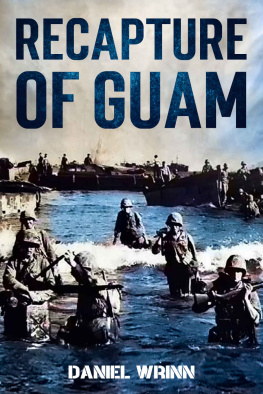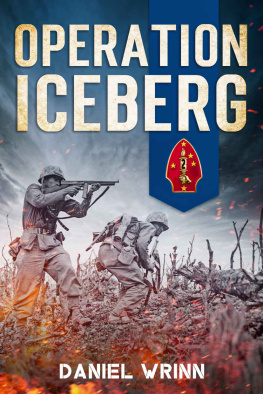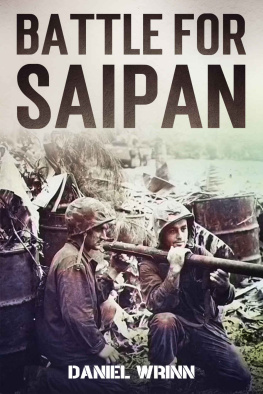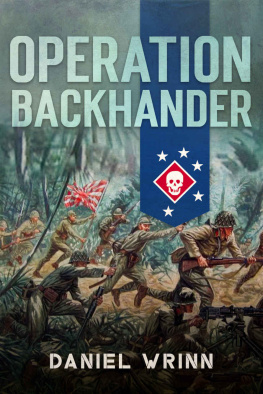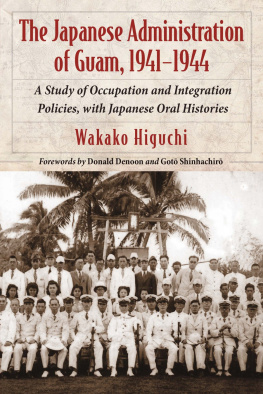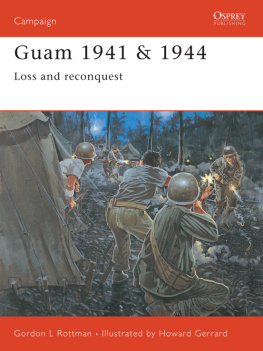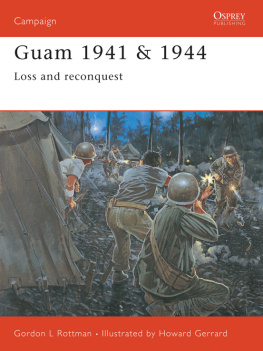Wrinn - Recapture of Guam: 1944 Battle and Liberation of Guam
Here you can read online Wrinn - Recapture of Guam: 1944 Battle and Liberation of Guam full text of the book (entire story) in english for free. Download pdf and epub, get meaning, cover and reviews about this ebook. year: 2021, publisher: Storyteller Books, LLC, genre: Non-fiction. Description of the work, (preface) as well as reviews are available. Best literature library LitArk.com created for fans of good reading and offers a wide selection of genres:
Romance novel
Science fiction
Adventure
Detective
Science
History
Home and family
Prose
Art
Politics
Computer
Non-fiction
Religion
Business
Children
Humor
Choose a favorite category and find really read worthwhile books. Enjoy immersion in the world of imagination, feel the emotions of the characters or learn something new for yourself, make an fascinating discovery.
- Book:Recapture of Guam: 1944 Battle and Liberation of Guam
- Author:
- Publisher:Storyteller Books, LLC
- Genre:
- Year:2021
- Rating:4 / 5
- Favourites:Add to favourites
- Your mark:
- 80
- 1
- 2
- 3
- 4
- 5
Recapture of Guam: 1944 Battle and Liberation of Guam: summary, description and annotation
We offer to read an annotation, description, summary or preface (depends on what the author of the book "Recapture of Guam: 1944 Battle and Liberation of Guam" wrote himself). If you haven't found the necessary information about the book — write in the comments, we will try to find it.
Wrinn: author's other books
Who wrote Recapture of Guam: 1944 Battle and Liberation of Guam? Find out the surname, the name of the author of the book and a list of all author's works by series.
Recapture of Guam: 1944 Battle and Liberation of Guam — read online for free the complete book (whole text) full work
Below is the text of the book, divided by pages. System saving the place of the last page read, allows you to conveniently read the book "Recapture of Guam: 1944 Battle and Liberation of Guam" online for free, without having to search again every time where you left off. Put a bookmark, and you can go to the page where you finished reading at any time.
Font size:
Interval:
Bookmark:

Never miss a new release by signing up for my free readers group. Youll also get WW2: Spies, Snipers and Tales of the World at War delivered to your inbox. (You can unsubscribe at any time.) Tap here to sign up
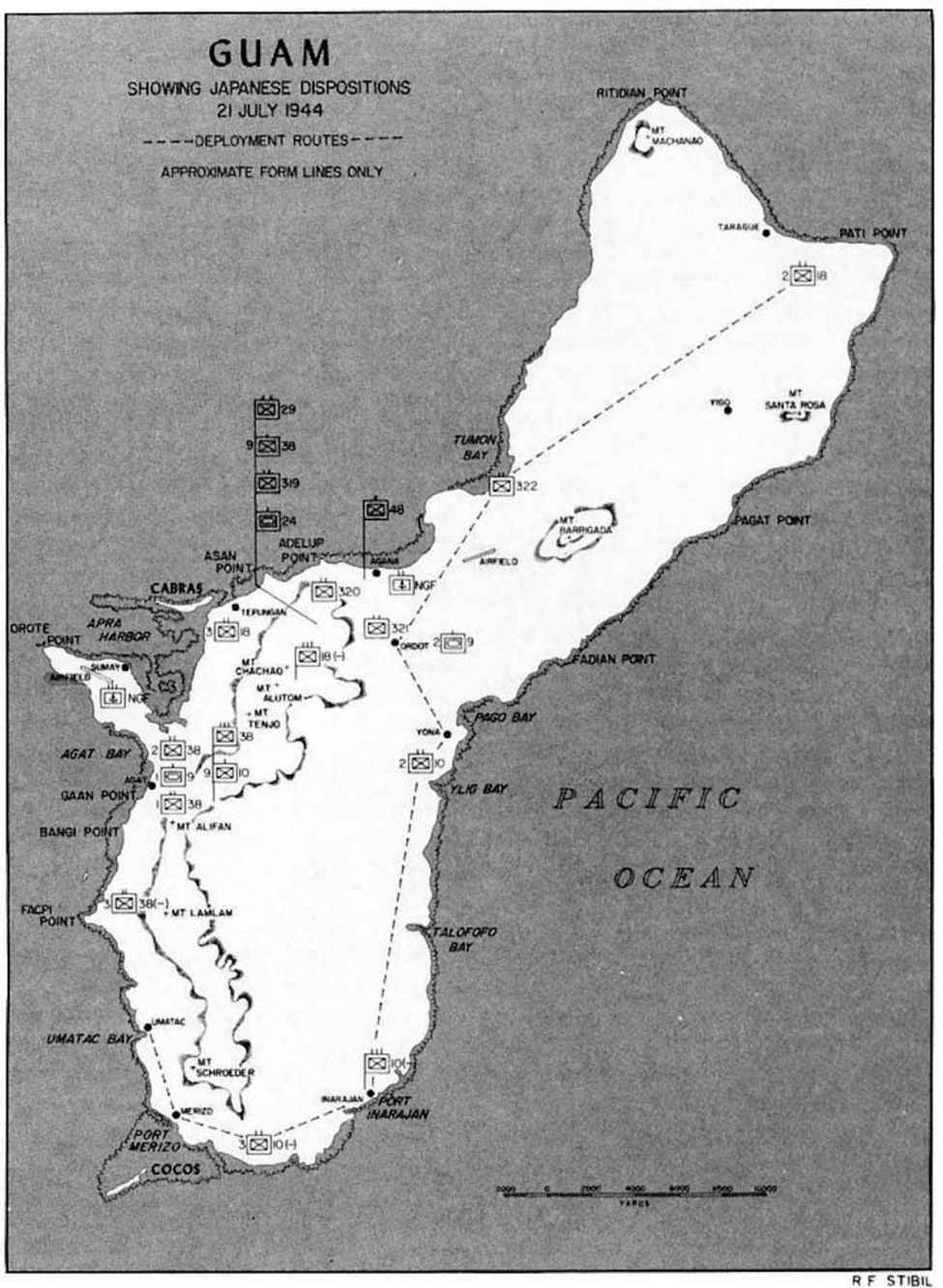
After a two-hour bombardment from six battleships, nine cruisers, and a handful of destroyers hammering the wrinkled black hills, cliffs, rice patties, and caves facing the attacking fleet on the west side of the islandliberation day began at 0530 on July 21, 1944.
Flames fountained from 14-inch guns belching thunder and fire. Setting off a spectacular blossom of flame on the inland hillsides and fields. The glow from the star shells illuminated the shore, the ships, and the troops lining the rails of the LSTs (Landing Ships, Tank), bringing the soldiers and Marines back to Guam.
The daylight shelling was enhanced by the bombing and strafing of carrier fighters, torpedo planes, and bombers for the pre-landing softening up. Task Force 58 had blasted Guams airfield since June 11, while other bombardments had started as early as May 6.
Marine assault troops laden with fighting gear, and bayonets bulging from their packs, enjoyed their traditional Marine pre-landing breakfast of steak and eggs. The loudspeakers echoed: Now hear this... Now hear this. Unit commanders on board the LSTs visited with their Marines and double-checked their gear. They straightened packs, gave encouraging pats on the shoulder, and squared away the lines of Marines going below to the well decks before boarding the LVTs (Landing Vehicles, Tracked).
Troops on board the attack transports went over the rail and down cargo nets. Weighed down with forty-plus pound packs and weaponsthey held on for their lives. They clambered into their LCVPs (Landing Craft, Vehicle, Personnel) or Higgins boats. If all went as planned, these troops would transfer from the landing craft to the LVTs at the reefs edge.
Aircraft roared overhead. Navy guns thundered a deafening background noise. The voice of Major General Roy Geiger, commander of III Amphibious Corps, boomed: Youve been honored. The nation watches you go to battle to liberate this former American bastion from the enemy. The honor bestowed on you is a signal one. May the glorious traditions of the Marine Corps esprit de corps spur you to victory. You have been honored.
On board the crowded and muggy well decks of the LSTs, troops climbed on board the LVTs. They waited in a hell of claustrophobia until the LSTs bow doors dropped. The loaded LVTs rattled out over the ramps into the swell of the sea. Amphibian tractors circled near the lines of departure while a flight of attack craft from the Wasp drowned the amtrac engines whine, whirling up clouds of fire and dust obscuring the landing beaches. Fifty-three torpedo planes, sixty-five bombers, and eighty-five fighters executed a bombing sweep and grass-cutting strafing along the northern landing beaches of Agana, heading south toward Bangi Point.
Task Force 53 commander, Admiral Richard Conolly, said: I aim to get the troops ashore standing up. Conolly earned the nickname Close-in Conolly from his insistence on having naval gunfire support ships fire very close in to the beaches.
Private First Class James Helt was a radio man in the bow of an LVT moving toward shore. He later wrote about how he wondered if anything could still be alive on Guam.
Colonel Hideyuki Takeda, a staff officer in the defending 29th Division, wrote the island could only be defended if the Americans did not land. In his diary, he also noted that the only respite from the barrage was a stiff drink.
The bold and brave Navy UDT (Underwater Demolition Teams) cleared all the beach obstacles for the assault. Navy Chief James Chittum noted these pathfinders were often close enough to draw small arms fire. They exploded 650 wire obstacle cages filled with cemented coral on Asan. On Agat, they detonated a 200-foot hole for unloading in the coral reef. Navy UDT teams also removed half of a small freighter blocking the channel from the assault. Scouts and swimmers left a sign for this first assault wave at Asan: Welcome MarinesUSO This way.
At 0730, a flare was fired overhead the waiting flotilla. Admiral Conolly ordered: Land the Landing Force. The first wave of the 3rd Marine Division broke the circle of waiting LVTs and formed a line to cross the 2,000 yards of water to the beach between Asan and Adelup. By 0830, the first elements of the 3rd Marine Division were on Guam. Less than five minutes later, the lead assault troops of the 1st Provisional Marine Brigade crossed the shell-cratered strand at Agat, six miles south of the beachhead at Asan-Adelup.
In late 1943, the Joint Chiefs of Staff decided to advance the direction of the Pacific War. In command of the Southwest Pacific, General MacArthur was ordered to head north through New Guinea to regain the Philippines. Admiral Nimitz, commander-in-chief of the US Pacific Fleet, proposed to move through the Central Pacific to secure a hold in the Marianas.
The strategic bombing of Japan would originate from captured airfields on Guam, Saipan, and Tinian. The new strategic weapon for the attacks would be the B-29 bomber with a range of 3,000 miles and the ability to carry over 10,000 pounds of bombs. The codename for this Marianas operation was Forager. The drive in the Central Pacific started with the landings on Tarawa in November 1943. Followed by landings on Roi-Namur, Eniwetok, and Kwajalein.
Admiral Nimitz finalized his plans for Guam in 1944. He selected his command structure for the Marianas campaign. Admiral Spruance, coming off a tremendous victory at Midway, was designated Commander of the Fifth Fleet and all the Central Pacific Task Forces. Spruance would command all units involved in Operation Forager.
Admiral Turner, who had commanded naval forces at Guadalcanals landings, was to head Task Force 51. Admiral Turner would also command the northern attack force for the invasion of Saipan and Tinian. Admiral Connolly whod commanded the invasion forces at Roi-Namur in the Marshalls, would lead the southern attack forceTask Force 53 assigned to Guam.
General Holland Smith, the expeditionary troop commander for the Marianas, would be responsible for the northern troops and landing forces on Saipan and Tinian. Marine General Roy Geiger, an aviator who had conducted the Bougainville operation, would command the southern troops and the III Amphibious Corps landing forces on Guam.
Guams invasion was originally set for June 18, the 3rd Marine Division, the 1st Provisional Marine Brigade, and the Armys 77th Infantry Division would lead the assault, but the 3rd and 1st Marine Division were held in floating reserve until the course of operations on Saipan became clear. The 77th stood by on Oahu, ready to be called in if needed.
Admiral Spruance kept the floating reserves southeast of Saipan, out of the path of any Japanese naval attack. A powerful Japanese fleet was eager to clash with the American invasion force and descended on the Mariana Islands. The opposing carrier groups fought it out nearby in the battle of the Philippine Sea, one of the most critical battles of the Pacific War. The Japanese Imperial Navy lost over 300 planes out of the 430 launched in the fight. On June 19, the clash would be forever known as the Great Marianas Turkey Shoot. It was a catastrophe for the Japanese and ended once and for all any enemy air or naval threat to the Mariana Islands invasion.
Font size:
Interval:
Bookmark:
Similar books «Recapture of Guam: 1944 Battle and Liberation of Guam»
Look at similar books to Recapture of Guam: 1944 Battle and Liberation of Guam. We have selected literature similar in name and meaning in the hope of providing readers with more options to find new, interesting, not yet read works.
Discussion, reviews of the book Recapture of Guam: 1944 Battle and Liberation of Guam and just readers' own opinions. Leave your comments, write what you think about the work, its meaning or the main characters. Specify what exactly you liked and what you didn't like, and why you think so.

